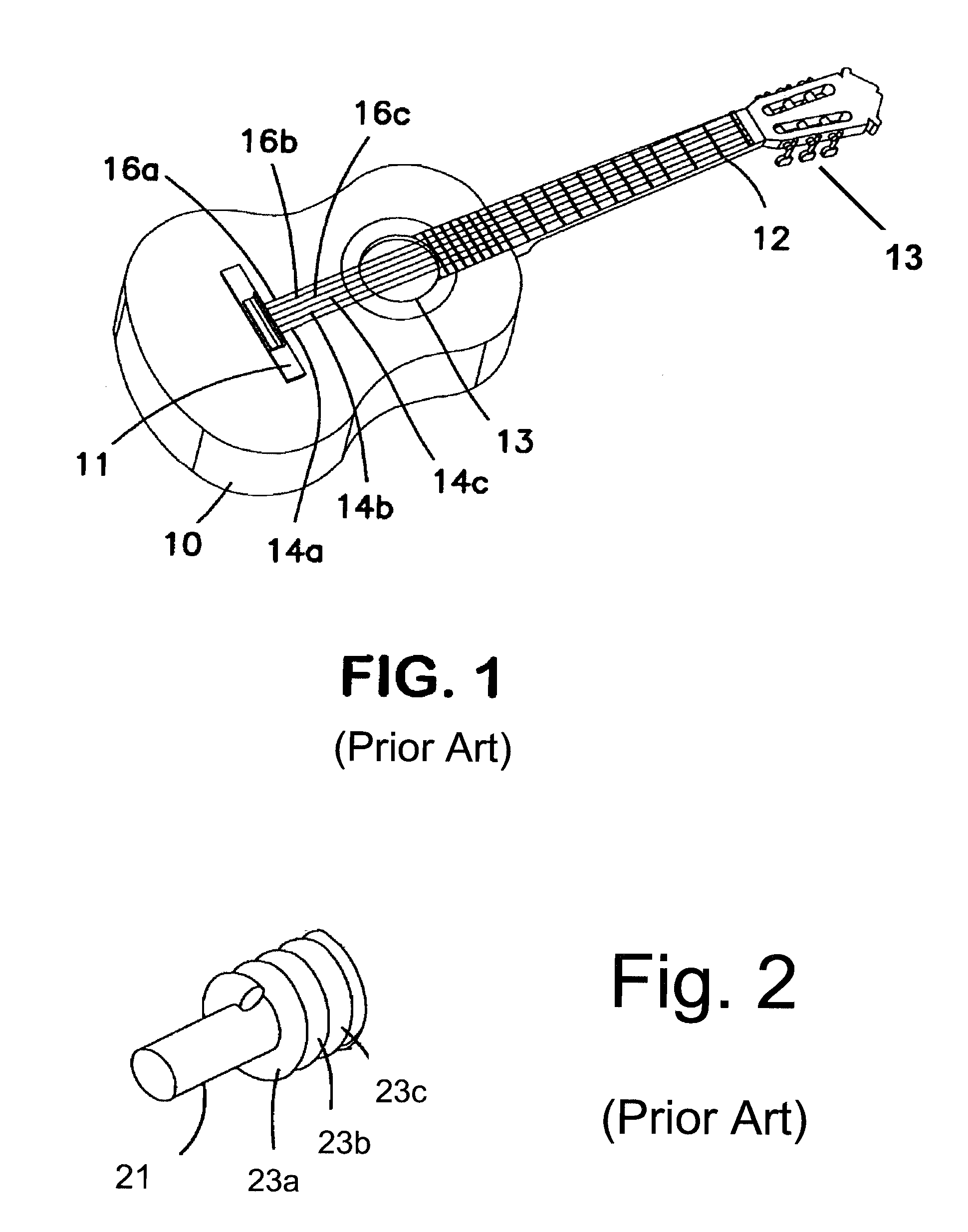Treated musical instrument strings
a technology for musical instruments and strings, applied in the field of musical instrument strings, can solve the problems of premature wear, premature vibration, and in some instances dangerous, and achieve the effects of reducing the risk of splintering premature wear of the saw blade, and reducing the risk of splintering
- Summary
- Abstract
- Description
- Claims
- Application Information
AI Technical Summary
Benefits of technology
Problems solved by technology
Method used
Image
Examples
Embodiment Construction
[0031]The invention begins with an untreated guitar string. While manufactured from many different materials, e.g. steel, nickel wound steel, ferrous and the like, at time of application the inventor uses nickel wound steel for the three lower tonality strings and steel, alone, for the three upper register strings. This six string configuration is the usual number of strings. In recent times, however, some manufactures use seven or more strings to create a basis to play a greater number of notes. No matter, the process is the same.
[0032]Once obtained, the strings are sent out to undergo the Cold fire Thermal Cycling Process, (CTCP). A process patented under U.S. Pat. No. 6,332,325 the process, by using state of the art machines, subjects the metal in the strings to a metal tempering cryogenic process treatment that exposes the metal to sub-zero and hot temperatures over and over again within a twenty four hour period. This process causes any soft Austenite retained after heat treatm...
PUM
 Login to View More
Login to View More Abstract
Description
Claims
Application Information
 Login to View More
Login to View More - R&D
- Intellectual Property
- Life Sciences
- Materials
- Tech Scout
- Unparalleled Data Quality
- Higher Quality Content
- 60% Fewer Hallucinations
Browse by: Latest US Patents, China's latest patents, Technical Efficacy Thesaurus, Application Domain, Technology Topic, Popular Technical Reports.
© 2025 PatSnap. All rights reserved.Legal|Privacy policy|Modern Slavery Act Transparency Statement|Sitemap|About US| Contact US: help@patsnap.com

